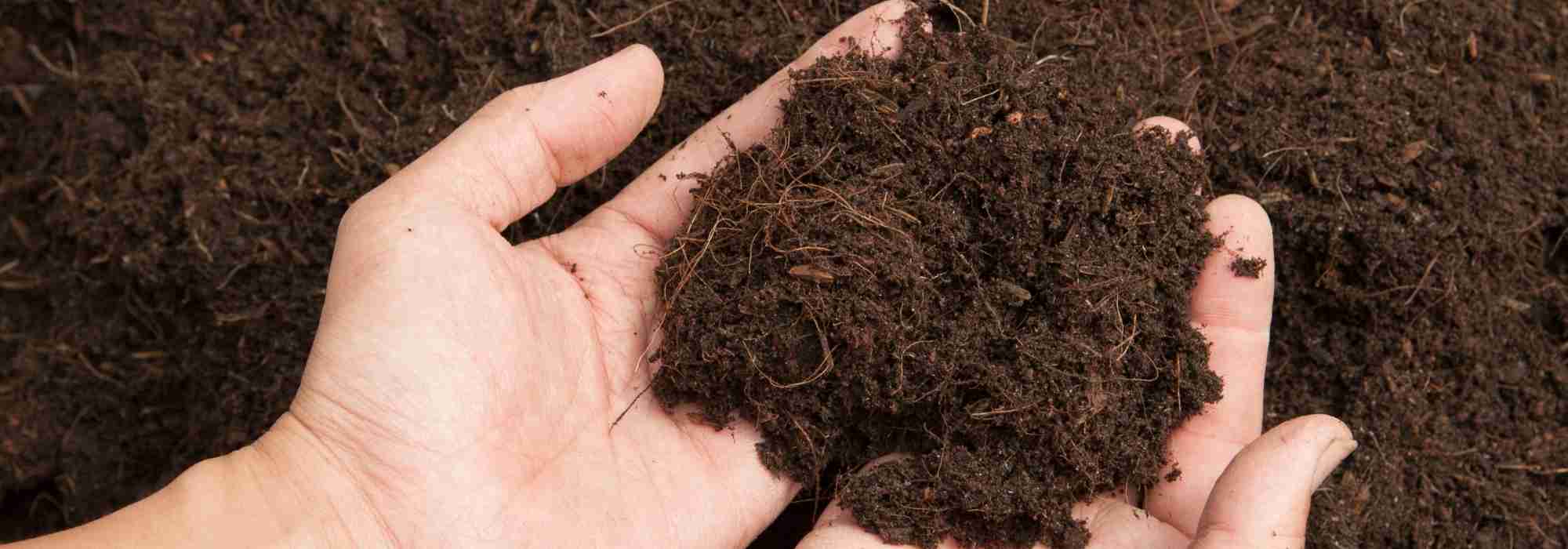
The role of humus in soil fertility
Everything you need to know about humus
Contents
Which gardener has never heard of the famous soil humus? This term is often misused to refer to a whole range of amendments, fertilisers, compost, and other nutrients. This dark material is, before it concerns our gardens, a crucial element of our forest and grassland ecosystems. In this guide, we offer clarification on this term to help you towards fertile soil and thus… rich in humus!
Humus: definition
In strict terms, humus is a complex organic molecule rich in carbon resulting from the degradation of plant and animal organic matter (referred to as “litter” in the forest).
In nature, organic matter (leaves, wood, herbs, dead insects…) is first fragmented into small pieces by the invertebrates present in the soil (insects, springtails, millipedes, mites…) and then transforms into humus through the action of bacteria and fungi. The humus has a characteristic forest undergrowth smell and resembles coffee grounds in its dark colour.
This is why dark soils are recognised as fertile and therefore rich in humus.
To summarise these somewhat complex terms: humus is the final form of your compost when it has been digested by the billions of microorganisms inhabiting your soil.
Most gardeners believe that humus is the litter that makes up the forest undergrowth. In fact, humus is found just below this carpet of branches, leaves, and other decomposing materials.

In the forest, humus is found beneath the litter composed of leaves and organic debris
Read also
Vermicompost, midrib practicalWhat is the role of humus?
Humus molecules have the ability to attract and retain mineral elements from the soil due to their large lengths and surfaces.
They act both as a sponge retaining bacteria and as a glue that will bind soil clays to humus. They are rich in carbon and thus combat climate change during their formation.
Simply put, enriching soil with organic matter creates humus through the decomposition of microorganisms. This humus prevents minerals (fertilisers) from being leached away by erosion (wind, rain, soil work…) and distributes them (with the help of clays) to plants.
When we add compost to a plant, we provide the main ingredients for soil bacteria and fungi to produce humus, which will in turn nourish our plant.
When soil is mistreated by excessive ploughing or violent and deep digging, humus is burned and oxidised. It separates from the clays and creates erosion. This is why mudslides have become a real scourge in agricultural areas. Intensive practices and the use of chemical fertilisers and pesticidal products are causing this precious molecule to disappear from our soils.

Humus has a very characteristic black colour
How to achieve a soil rich in humus?
This can be summarised in two simple and effective practices:
- Add as much compost and organic matter to your soil as possible;
- Avoid traumatising your soil by leaving it naked or working it excessively.
Mulching, green manures, and moderate to low soil cultivation will be essential factors in increasing the humus content of your soil!
Covering your soil during winter will be the minimum you can do to limit humus loss. Ideally, it should almost never be left uncovered to prevent the humus from being burnt.
The benefits for our plants
Humus, when combined with clays, has the ability to retain essential mineral elements for plants.
When a gardener provides organic matter in the form of mulch (wood chips, grass clippings, or compost) to a plant, they indirectly nourish it by supplying the ingredients for microorganisms to produce humus.
Humus allows soil to retain a significant amount of water in addition to minerals. It acts as a true barrier against soil erosion and helps maintain its structure.

Don’t leave your soil naked; by covering it with mulch and humus, you greatly improve the soil structure and water retention capabilities!
- Subscribe!
- Contents
































Comments